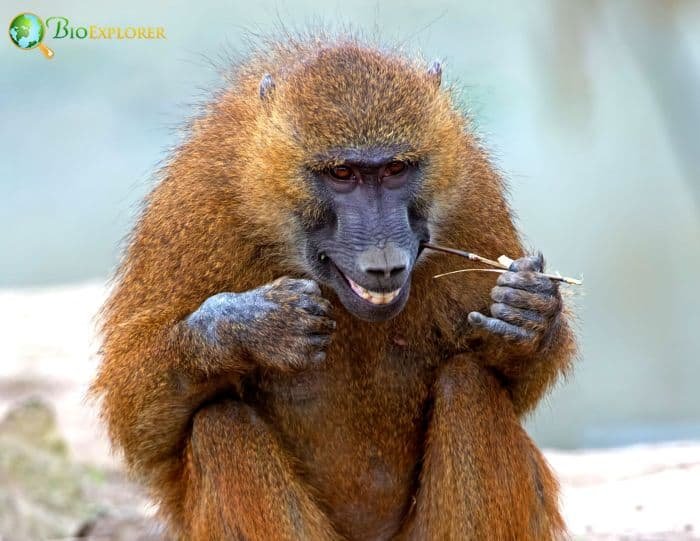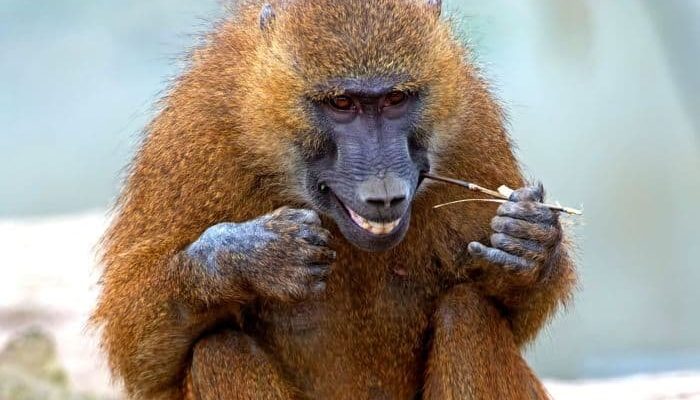
Imagine your neighborhood without any street cleaners—trash would pile up, and the place would quickly become unpleasant. Guinea baboons hold a similar role in their ecosystems. They contribute to their environments in ways that might surprise you. So, grab a cup of coffee, and let’s dive into understanding just how important these baboons are.
Guinea Baboons and Their Habitat
To truly appreciate the role of the Guinea baboon, you first need to know where they call home. These primates thrive in the dry, open woodlands and savannas of West Africa. Their habitat is rich with grasses, bushes, and trees that provide both food and shelter. Here’s an interesting thought: the more diverse their environment, the healthier the baboons and the ecosystems they inhabit. When baboons forage in these areas, they help maintain plant health by spreading seeds and controlling plant growth.
Now, you might be wondering, “What happens if their habitat changes?” Good question! Habitat destruction can lead to a decline in baboon populations, and in turn, this can have cascading effects on the ecosystem. In areas where baboons are less plentiful, you might see overgrowth of certain plants, which could affect other animal species that depend on a balanced ecosystem.
Seed Dispersal and Plant Growth
One of the most vital roles Guinea baboons play is seed dispersal. Picture this: a baboon munching on fruit, enjoying a tasty snack. As they eat, they inadvertently swallow seeds, which then get excreted in different locations, sometimes far from the parent plant. This process is crucial for a couple of reasons.
First, it helps in the germination of new plants. Baboons often travel significant distances, which means they can plant seeds in new areas where conditions might be just right for growth. Think of it like planting a garden; the more variety of plants you have, the healthier the ecosystem will be.
Second, this behavior promotes biodiversity. With baboons acting as nature’s little gardeners, they encourage the growth of a variety of plant species. This diversity not only supports the baboons but also many other species that rely on the plants for shelter and food. It’s a beautiful chain reaction!
Foraging Behavior and Ecosystem Balance
Guinea baboons are omnivores, meaning they eat both plants and animals. Their foraging behavior plays a big role in maintaining ecological balance. As they search for food, they often uproot vegetation and turn over soil, which can stimulate new growth. Here’s the thing: when baboons forage in this way, they also help other animals by creating patches of disturbed ground that attract insects and other creatures.
This foraging can be quite beneficial for the ecosystem. By creating a mix of open spaces and denser vegetation, baboons help maintain a balance that supports various species. So, as they dig and rummage through the underbrush, they’re not just looking for a meal; they’re also shaping the environment around them.
Guinea Baboons as Prey
In the circle of life, every player has a role, and Guinea baboons are no different. They’re part of the food web, serving as prey for larger predators, such as leopards and hyenas. By being part of this dynamic, they help sustain the populations of their predators. Think about it: without baboons, predatory species might struggle to find food, leading to a decline in their numbers as well.
This predator-prey relationship is crucial for maintaining a healthy ecosystem. If the predator populations decline, it can lead to overpopulation of baboons and other herbivores, which can in turn lead to overgrazing and degradation of the environment.
Social Structure and Cooperative Living
Guinea baboons are known for their complex social structures. They live in groups called troops, which can include dozens of individuals, sometimes even reaching up to a hundred. This social living isn’t just for companionship; it has significant ecological impacts.
Troops often work together when foraging, which increases their efficiency in finding food. This cooperation ensures that food sources are utilized more sustainably. When baboons forage in groups, they can also be more effective at avoiding predators as they watch out for one another. It’s like having a buddy system in the wild!
Additionally, strong social bonds within troops can lead to healthier individuals. Baboons that have supportive relationships tend to be less stressed and better at finding food, which contributes positively to the entire troop’s well-being.
Conservation Challenges Facing Guinea Baboons
Despite their important role, Guinea baboons face numerous challenges. Habitat destruction due to agriculture and urbanization threatens their populations. When humans encroach on their space, it disrupts their natural behaviors, leading to conflicts.
You might be wondering what can be done about it. Conservation efforts play a vital role in protecting these animals and their habitats. Education and understanding of their role in the ecosystem are essential, as they can help promote coexistence between humans and baboons. Supporting protected areas and wildlife corridors helps ensure these primates can thrive without conflict.
The Future of Guinea Baboons in Ecosystems
The future of Guinea baboons and their ecosystems is directly linked to human actions. If we continue to recognize the vital role they play, it can guide our conservation efforts toward more sustainable practices. Protecting their habitats not only benefits baboons but also contributes to the health of the entire ecosystem.
Imagine a world where we actively work to coexist with these animals, understanding that their well-being reflects our own. By ensuring that Guinea baboons continue their essential roles and thrive, we can maintain the delicate balance that supports countless other species in their ecosystems.
In conclusion, Guinea baboons are more than just wild animals on the African savanna. They’re crucial pieces in the ecological puzzle, influencing plant growth, supporting biodiversity, and maintaining balance within their habitat. So next time you think of these fascinating creatures, remember their significant contributions—they’re doing a lot more than just swinging from trees!

